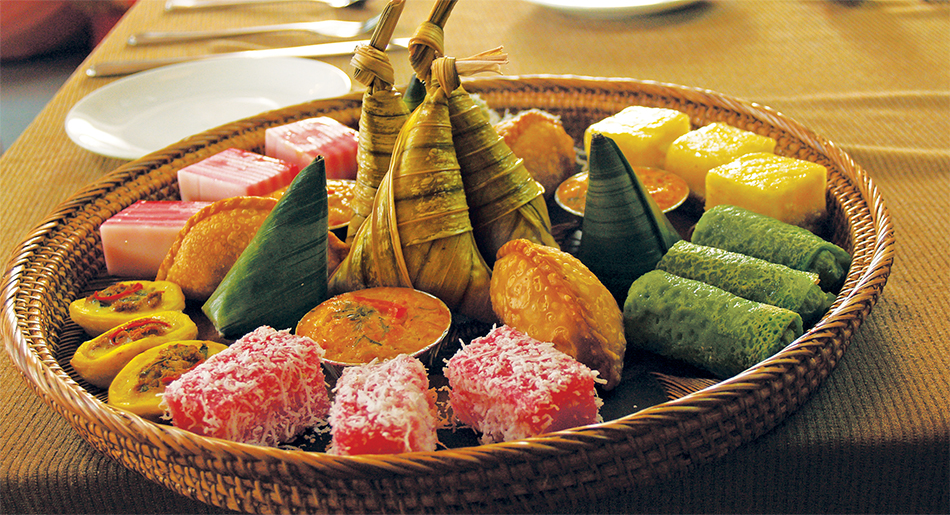
RECOMMENDATIONS
Like our people, Malaysian Kuihs come in a variety of shapes, colours and sizes. Some, like the common kuih lapis and seri muka, are cut in rectangular bite-sized pieces and are in layers.
While some are soaked in delicious sugary liquid like the Badak Berendam, others are sprinkled with coconut shavings such as the Onde Onde. With so many to choose from to delight your taste buds after the main course or for tea time, which is your favourite pick? In this issue, we covered the basic Malaysian kuihs you can easily find throughout the country.

Basic but oh-so delicious
This layered cute kuih is common and can be found in almost any store selling Malay kuihs. Typically pictured as one of the popular Malaysian kuihs in pictures or promotional posters, it is described as colourful soft rice flour pudding. Steamed and stacked in alternating coloured layers, kuih lapis has a sticky texture. Some people say, part of the fun of eating this traditional snack is by peeling and consuming it layer by layer.
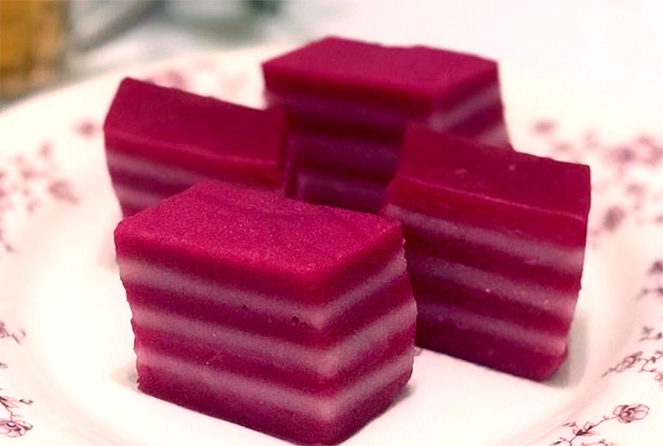
Decadent, rich flavour
Another Malaysian favourite is none other than Seri Muka. Made of glutinous rice, coconut milk, sugar and pandan leaves, Seri Muka is cut into rectangular pieces just like Kuih Lapis, but the flavour is far richer owing to the filling glutinous rice. The top green part is made of thick coconut milk and pandan juice which gives the kuih its fragrant smell. The glutinous rice that is cooked with coconut milk makes up the bottom layer. The salty bottom and the sweet top layer combine to give a harmonious decadent flavour that will be sure to appease your tastebuds.
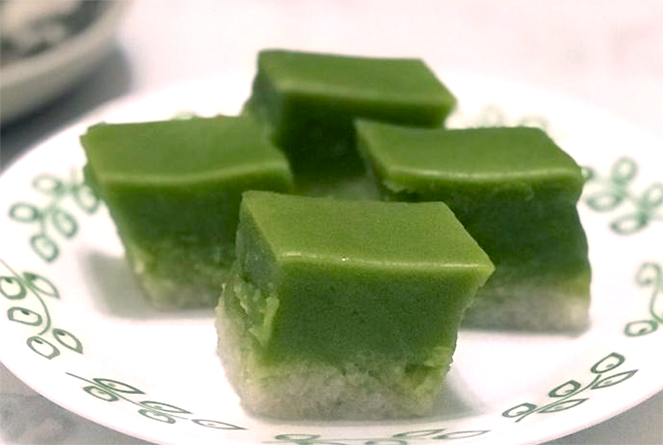
Spoonfuls of creamy goodness
If you can’t find this kuih at your local restaurant, don’t fret. Tepung Pelita will surely make an appearance at bazaars during the month of Ramadan as it is one of the Ramadan crowd favourites. Usually filled in banana leaves that are moulded into cubes, this kuih consists of two layers: the white layer of rice flour custard on top, and the sweet, green-coloured corn flour at the bottom. It would only take a few spoonfuls to finish one cube, so we won’t judge you if you can finish a few in one sitting.
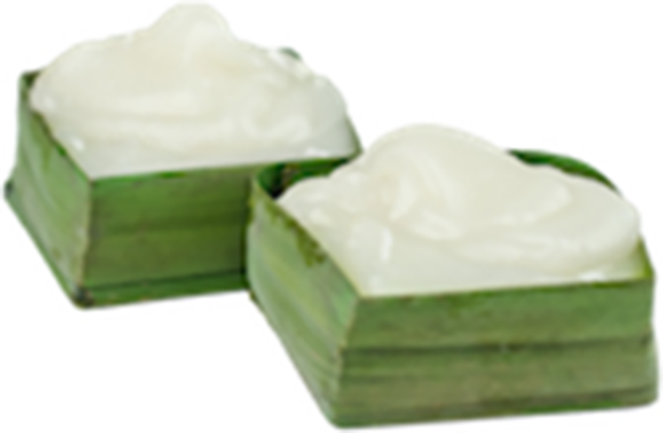
Savoury pockets
For something savoury, munch a karipap or two. Currypuffs or termed as karipap by the locals, are small pastries filled with curry, chicken or potatoes. Some variants include boiled eggs and sardines. The crunchy outer layer complements the thick curry fillings within. They are a staple for tea time and perfect as snacks if you need something to alleviate your hunger pangs.
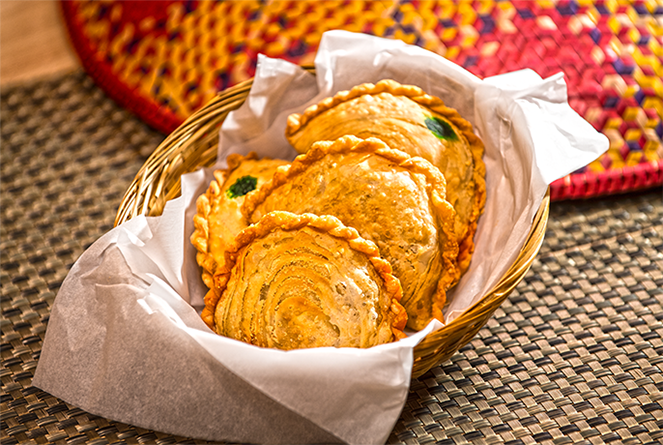
Chewy delight
Kuih sago is a mildly sweet dessert made from sago pearls and coated with grated coconut. The soft and chewy texture makes it appealing for adults and kids alike. The eye-catching red colour is obtained from rose extract. Typically served chilled, it is best enjoyed in hot Malaysian weather.
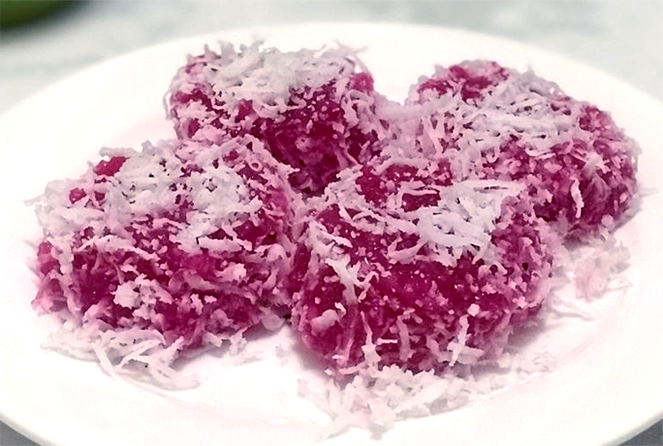
Soft, yummy dessert
Kuih koci is a steamed dessert made from glutinous rice flour and stuffed with coconut fillings and Gula Melaka (palm sugar). The fillings are coated in coconut milk and then wrapped in banana leaves, lending it the signature look on top of the distinctive flavour and fragrant smell. The soft texture makes it easy to chew, which makes appealing for both the young and old. Kuih koci is typically served during breakfast or tea time.
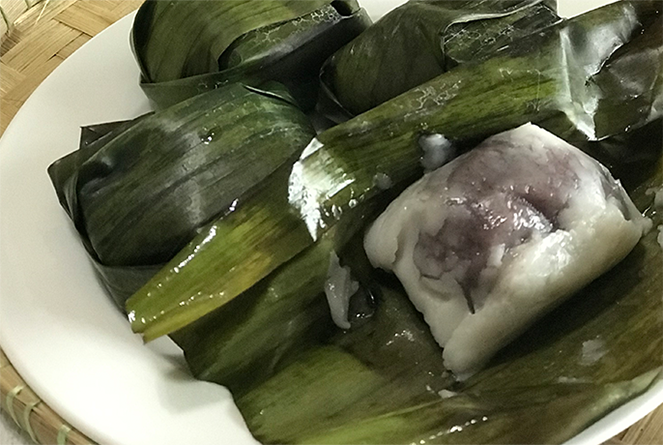
Sweet, steamed bananas
Like Kuih Koci, Lepat Pisang is also easily recognisable from its wrapping of banana leaves. However, instead of a rounded exterior, Lepat Pisang is usually made in rectangular shape. These steamed banana parcels are made by mashing bananas and sugars and stirring the mix with plain flour, corn flour, grated coconut and a bit of salt. For a more attractive colour, Gula Melaka is usually used.
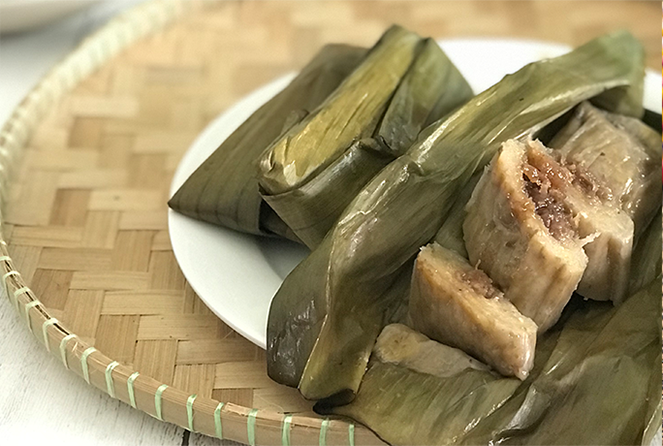
If you are what you eat, which Malaysian Kuih will you be? Let us know your favourite snacks you cannot resist when you stop by the roadside stalls or local restaurants for these wonderful goodies!
Photo Credits to sabaheats.com and Bits & Bites
Share this article